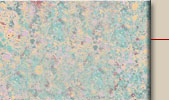| THE BASIC TEN SERIES OF STRUCTURAL INTEGRATION*
*This description gives a basic overview of the goals of a Rolfing series. A series often consists of around ten sessions. Different individuals usually require variations in the sequence format to account for particular structural or nerve entrapment issues. Although a full series is desirable to work the whole body adequately enough to achieve lasting results, one can benefit from fewer sessions. In my practice, freeing tethered and irritated nerves is always on the forefront throughout the process. Because nerves rule the situation by controlling myofascial tension, range of motion, transmitting pain signals and driving inflammation, neural mobilization effects greater structural change and pain relief than regular myofascial work, and also aids in resetting sympathetic/parasympathetic balance.
SESSION ONE. Establish a freer, more balanced and efficient breathing pattern by working around the torso, shoulders, neck and head. Begin the process of mobilizing and horizontalizing the pelvis by working around the hip joint and legs. Start working with the client’s specific structural issues or problems. This continues throughout the series.
SESSION TWO. Work with feet, lower legs and knees to create a more stable base of support for the upper body. This can help with issues such as plantar fasciitis, bunyons and flat feet. Straighten or enhance the spinal curves, as appropriate, by working in the lower, middle and upper back, and in the neck and head.
SESSION THREE. Enhance front/back balance and continue working with the client’s breathing pattern through work from the side surfaces of the legs, arms, torso, neck and head. Lengthen or release the back of the spine.
SESSION FOUR. Begin working to establish a core of support in the legs, from the inner arches of the feet up the inside surfaces of the legs. Lengthen and ease the spinal curves.
SESSION FIVE. Lengthen and soften the outer abdominal wall. Work in the tissues that line the front of the torso and pelvis to create a more balanced relationship between inner and outer structures. Connect legs to spine through the iliopsoas muscle.
SESSION SIX. Free the back of the legs and pelvis. Establish more freedom of movement and resilience in the whole spine through work around the back of the pelvis, back, neck and head.
SESSION SEVEN. Continue work with the upper back, shoulders and neck. Work with neck, cranium and facial structures. Balance the rhythms of cranial movement.
SESSION EIGHT. Work with pelvic girdle and limbs to create better lower body integration and support for the upper body. Additional attention to individual problems.
SESSION NINE. Work with the shoulder girdle and limbs to create better upper body integration and a more balanced relationship to the lower body. Additional attention to individual problems.
SESSION TEN. Establish horizontal planes of support and movement from the feet up to the head. Additional attention to individual problems.
OTHER POSSIBILITIES
AN ADVANCED SERIES
If you've already had the basic ten sessions of Rolfing, but feel like you need more work, you may choose to do 3-5 sessions of "post-ten" work. This can be a nice way to get back in touch with the freedom and new movement patterns you discovered in the earlier work.
VISCERAL MANIPULATION.
This is a MUCH GENTLER approach. I will do visceral work when someone has had major surgeries, injuries or infections, which can create adhesions that impair proper mobility and motility of the organs. Because the body tends to compensate and protect an organ in trouble, serious structural issues are often resolved by freeing the viscera.
CRANIOSACRAL THERAPY
This is another GENTLE but powerful technique which seeks to balance the cranial rhythm, balance tensions in the dural membranes, and restore proper cranial bone movement. Some of this work is usually done within each Rolfing session.
| |
